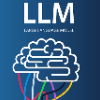The rapid rise of Large Language Models (LLMs) is transforming traffic and transportation research, with significant advancements emerging between the years 2023 and 2025 -- a period marked by the inception and swift growth of adopting and adapting LLMs for various traffic and transportation applications. However, despite these significant advancements, a systematic review and synthesis of the existing studies remain lacking. To address this gap, this paper provides a comprehensive review of the methodologies and applications of LLMs in traffic and transportation, highlighting their ability to process unstructured textual data to advance transportation research. We explore key applications, including autonomous driving, travel behavior prediction, and general transportation-related queries, alongside methodologies such as zero- or few-shot learning, prompt engineering, and fine-tuning. Our analysis identifies critical research gaps. From the methodological perspective, many research gaps can be addressed by integrating LLMs with existing tools and refining LLM architectures. From the application perspective, we identify numerous opportunities for LLMs to tackle a variety of traffic and transportation challenges, building upon existing research. By synthesizing these findings, this review not only clarifies the current state of LLM adoption and adaptation in traffic and transportation but also proposes future research directions, paving the way for smarter and more sustainable transportation systems.
翻译:暂无翻译




